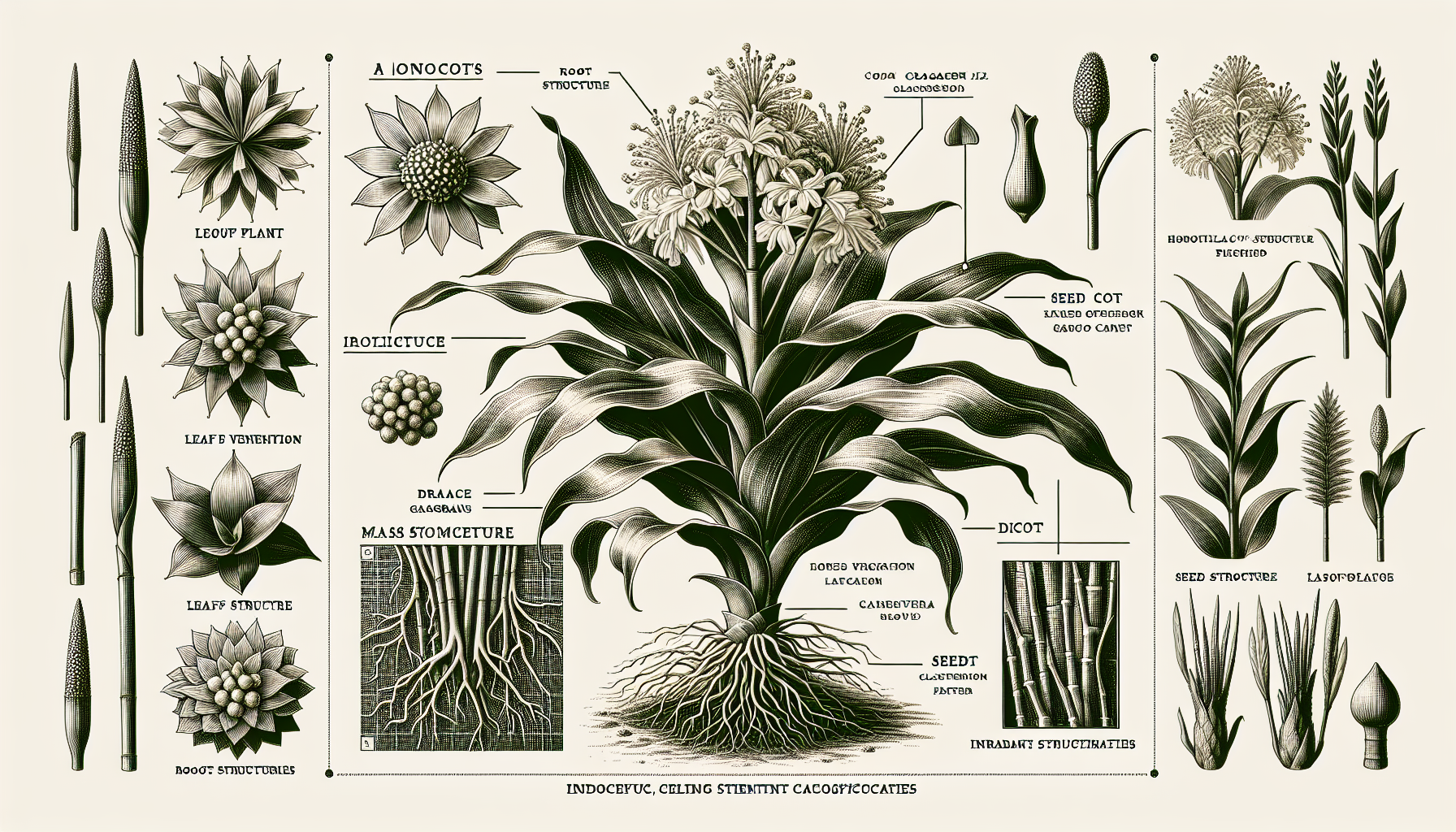
is a corn plant dracaena a monocot or dicot
Is a Corn Plant Dracaena a Monocot or Dicot?
The corn plant dracaena (Dracaena fragrans), also known as the mass cane, is a popular houseplant celebrated for its hardy nature and striking foliage. But when it comes to its botanical classification, a common question arises: is the corn plant dracaena a monocot or dicot? Let’s explore the answer and the characteristics that determine its classification.
Understanding Monocots and Dicots
To classify plants as either monocots or dicots, we look at specific features of their seeds, leaves, stems, and flowers. Here’s a quick breakdown:
- Monocots: Plants with one seed leaf (cotyledon), parallel leaf veins, fibrous root systems, and floral parts typically in multiples of three.
- Dicots: Plants with two seed leaves (cotyledons), net-like leaf veins, taproot systems, and floral parts in multiples of four or five.
These distinctions help botanists classify plants into these two major groups. So where does the corn plant dracaena fit in?
The Corn Plant Dracaena: A Monocot
The corn plant dracaena is classified as a monocot. Here’s why:
- Leaf Veins: The dracaena’s long, sword-shaped leaves exhibit parallel venation, a hallmark of monocots.
- Root Structure: Its root system is fibrous rather than a single, dominant taproot, which is typical of monocots.
- Growth Pattern: The plant’s growth habit and structure align with those of other monocots, such as grasses and palms.
These characteristics confirm that the corn plant dracaena belongs to the monocot group of plants.
Other Fascinating Facts About the Corn Plant Dracaena
Beyond its monocot classification, the corn plant dracaena is a fascinating and versatile plant. Here are some quick facts:
- Air Purifying Properties: It’s known for its ability to remove toxins like formaldehyde from indoor air, making it a great choice for improving air quality.
- Low Maintenance: The corn plant thrives in low light and requires minimal watering, making it perfect for busy or beginner plant owners.
- Symbolism: In some cultures, dracaena plants are considered symbols of good luck and prosperity.
Tips for Caring for Your Corn Plant Dracaena
If you’re lucky enough to have a corn plant dracaena in your home, here are some essential care tips to keep it healthy:
- Light: Place your dracaena in bright, indirect light, though it can tolerate lower light conditions.
- Water: Allow the soil to dry out between waterings to prevent overwatering, which can lead to root rot.
- Temperature: Keep it in a warm environment, ideally between 65–75°F (18–24°C).
- Humidity: Moderate humidity levels are ideal, but it can adapt to average indoor humidity.
- Fertilizer: Feed with a balanced liquid fertilizer during the growing season (spring and summer).
For more detailed care instructions, check out our Dracaena Care Guide.
Conclusion
The corn plant dracaena (Dracaena fragrans) is a monocot, distinguished by its parallel leaf veins, fibrous roots, and growth pattern. Whether you’re a seasoned plant enthusiast or just starting your indoor gardening journey, this hardy and attractive plant is a wonderful addition to any space. With proper care, your dracaena will thrive and bring a touch of greenery to your home for years to come.
Have more questions about dracaena or other houseplants? Leave a comment below or explore our Plant Care Blog for more tips and insights!